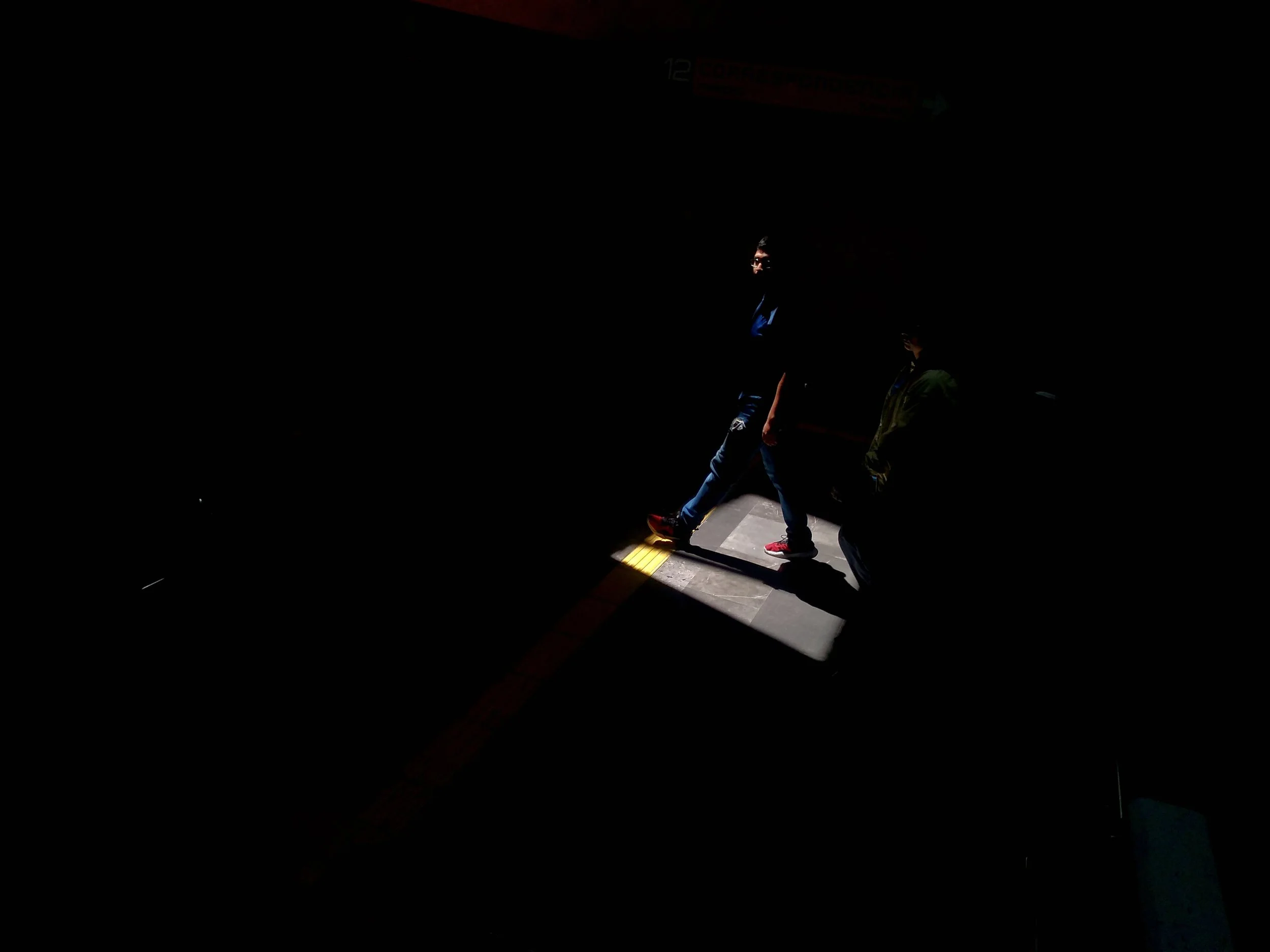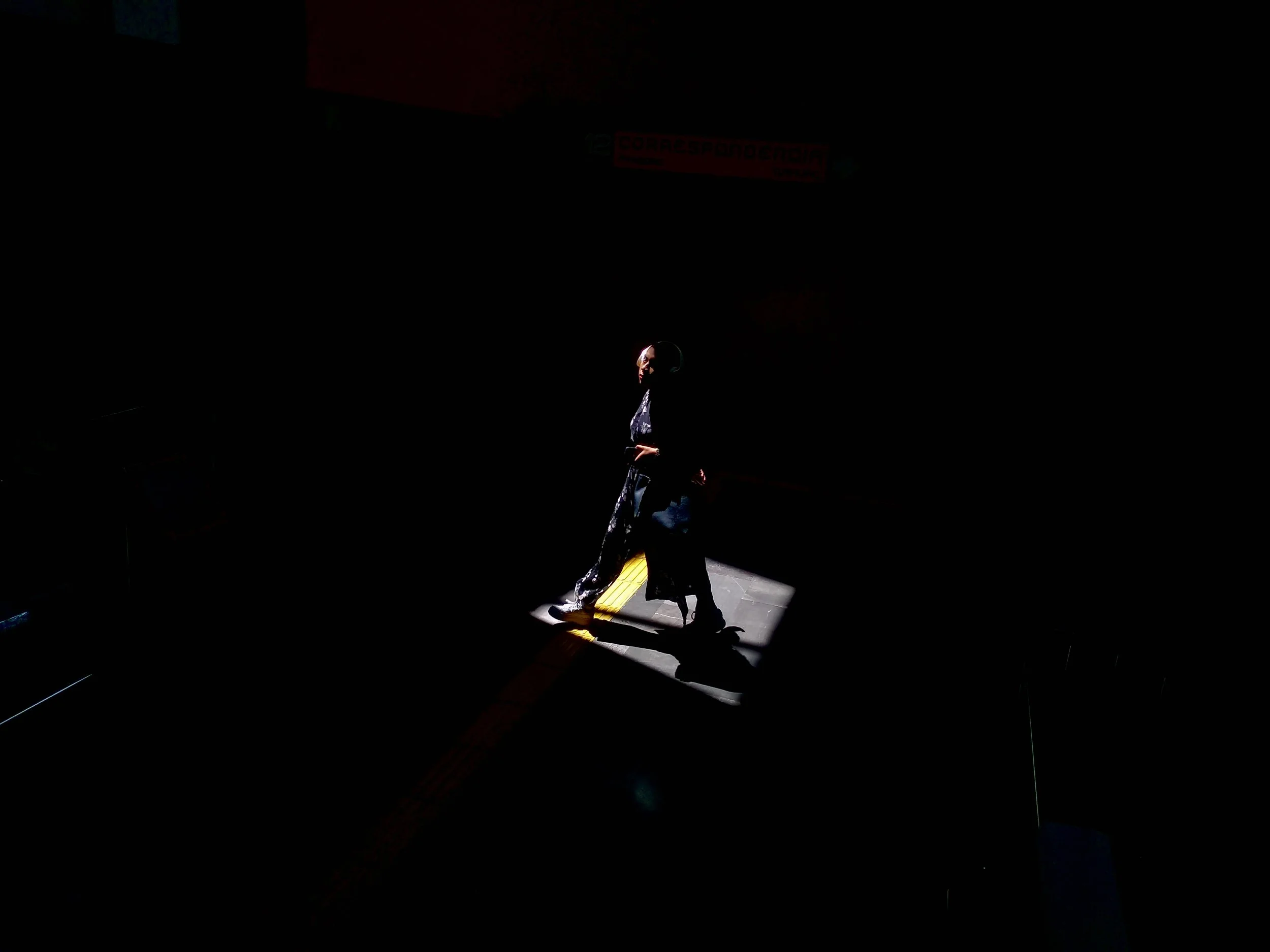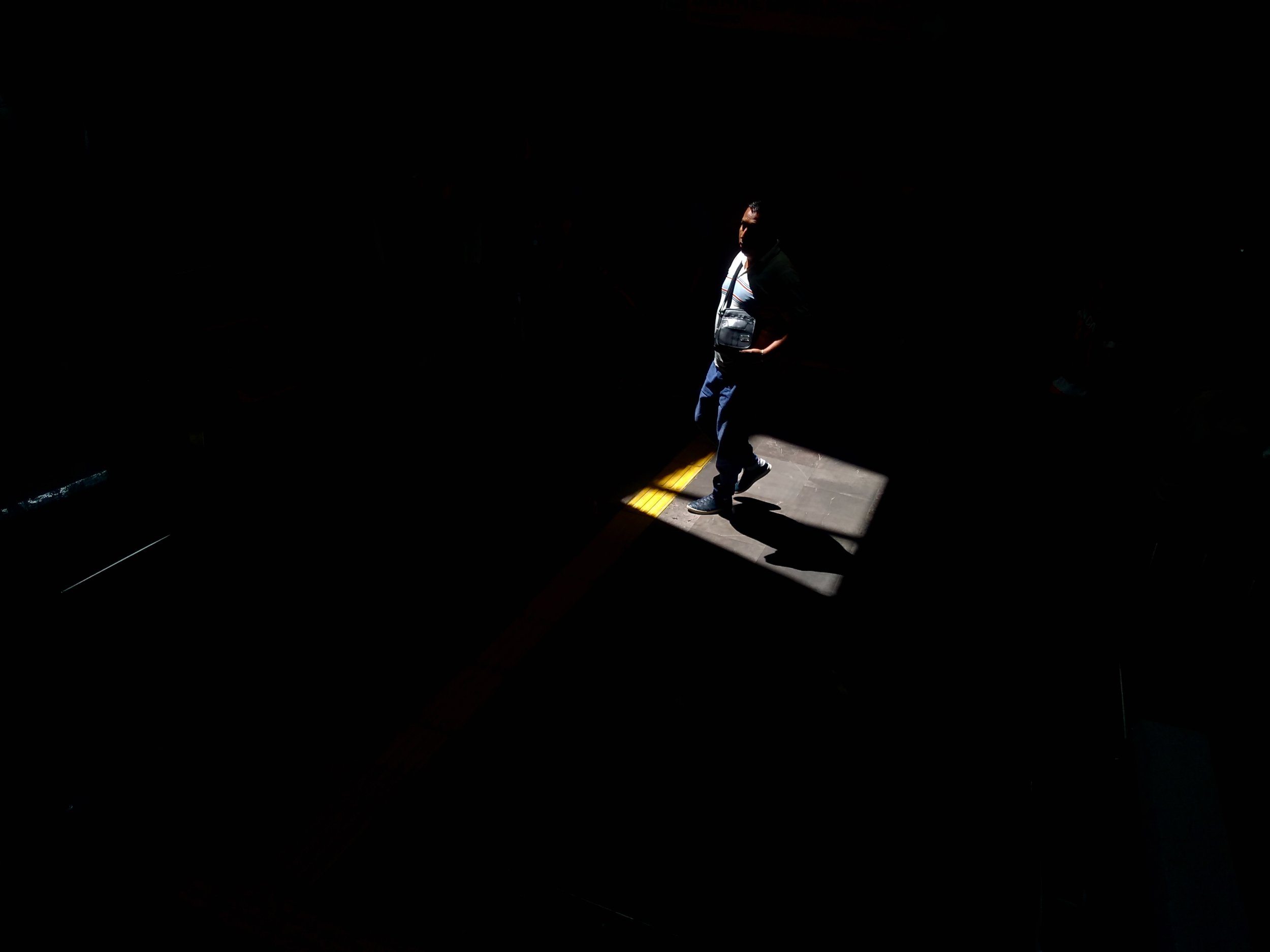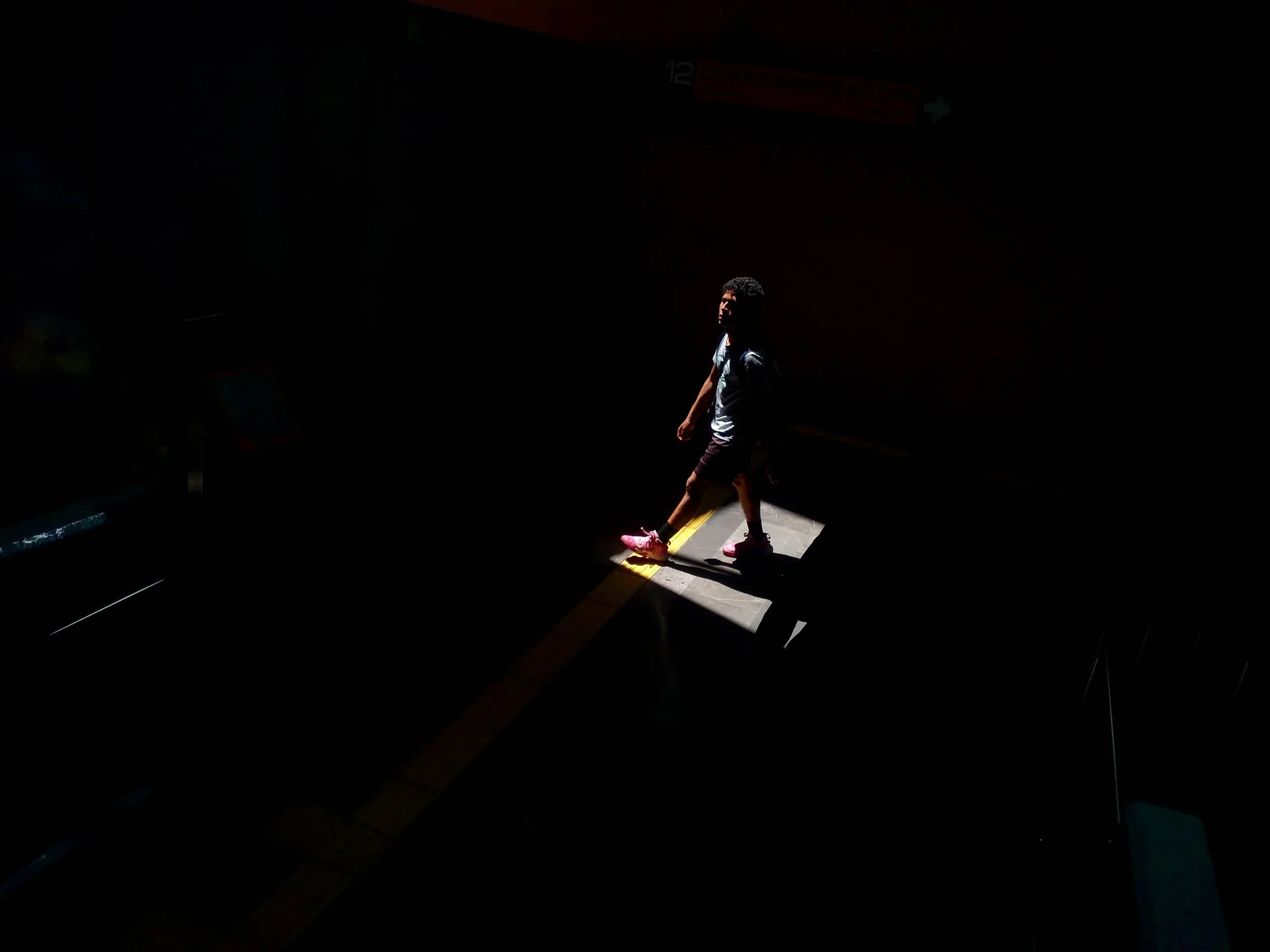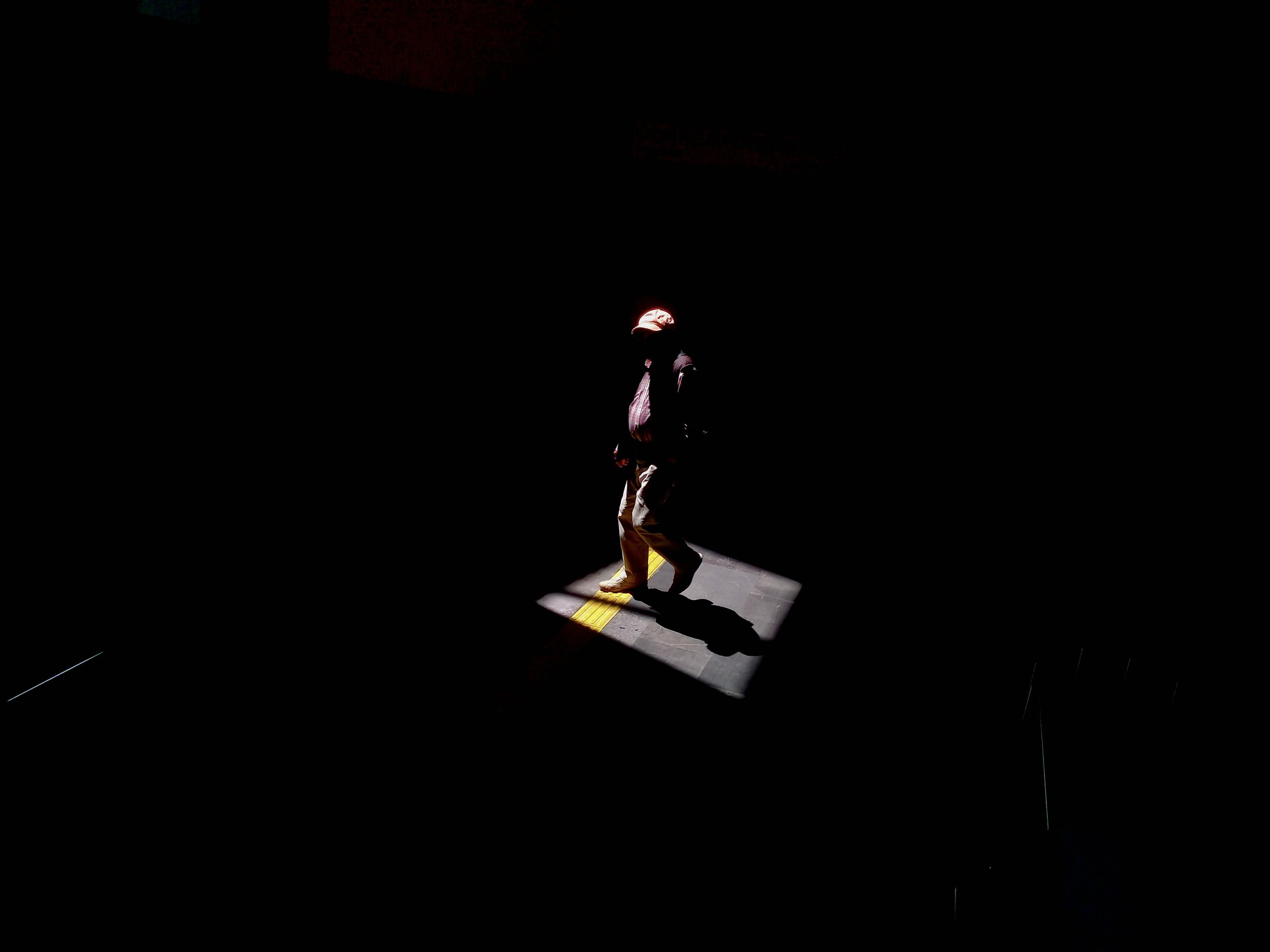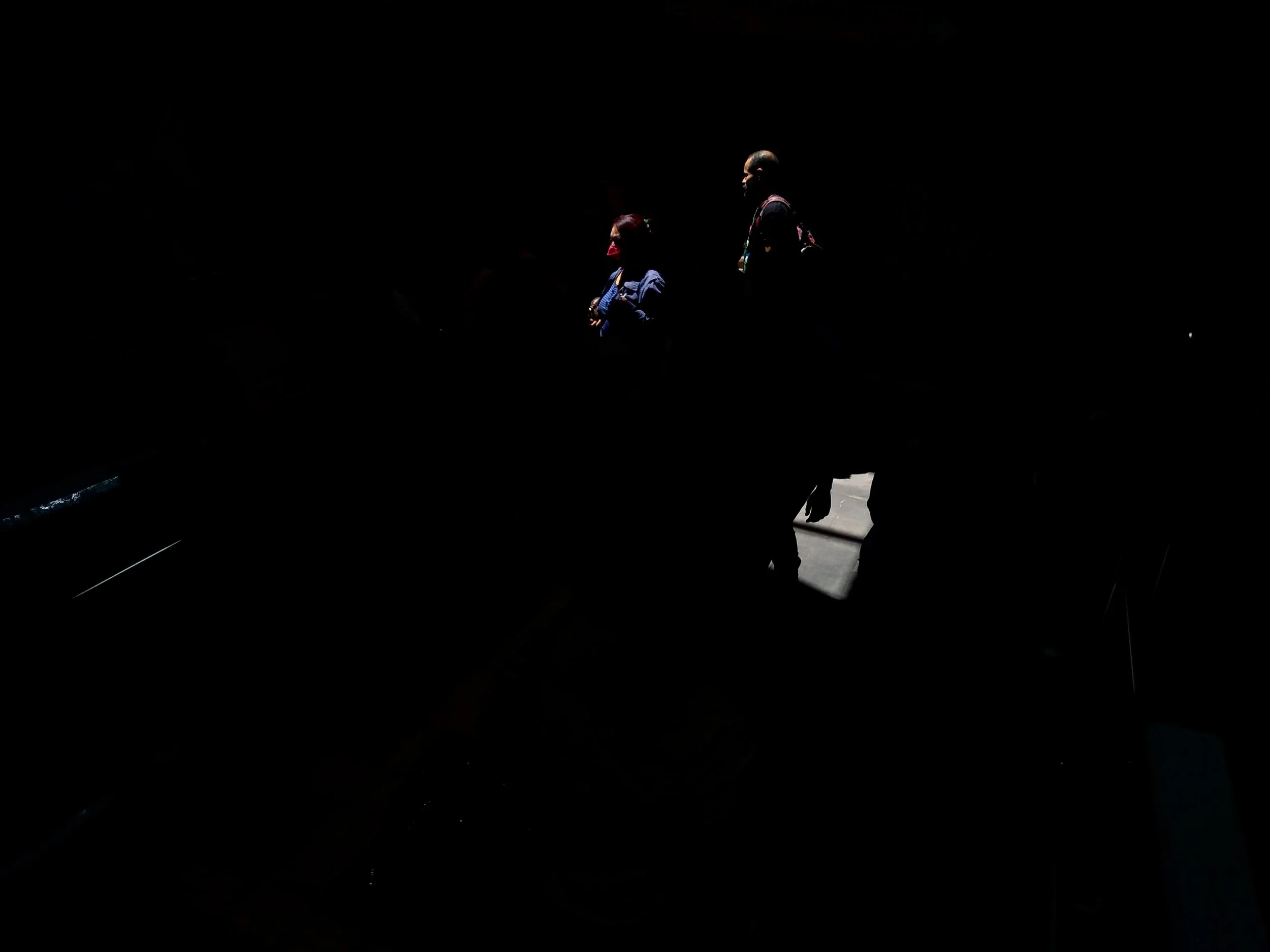Sin Título 1 - 7, 2023, Edición 1/5, Papel Enhanced de Epson Dimensiones 22 x 17 cm, 300 USD 7000 Pesos en marco
"LOS SERES HUMANOS SON BUENOS POR NATURALEZA, EL TRANSPORTE PÚBLICO LOS CORROMPE"
ARTiST @ARTUROALANiS07
La fotografía tiene el poder de no solo capturar momentos, sino de destilar la esencia de sus sujetos, ya sean paisajes grandiosos o los ritmos mundanos de la vida cotidiana. Fue en busca de lo último que este notable artista se aventuró en las profundidades del sistema de metro de la Ciudad de México para una exploración única. La serie, llamada conmovedoramente "Los seres humanos son buenos por naturaleza, el transporte público los corrompe", ofrece una perspectiva subterránea de la humanidad en sí misma.
El artista, usuario de toda la vida del metro, encuentra el mundo subterráneo como un microcosmos de la vida misma, lleno de estrés y urgencia. Él enfatiza que dependemos del metro, no al revés. Esta simbiosis con un entorno caótico está en el corazón de su empresa artística. Esta urgencia se traduce en una experiencia única donde el tiempo parece moverse de manera diferente, aumentando el estrés y enfatizando el individualismo sobre la comunidad.
La serie sirve como un botón de pausa, aislando a los sujetos de su entorno caótico. Cada fotografía ofrece una ventana a las vidas de las personas mientras navegan por el laberinto de túneles y trenes. El énfasis en la individualidad no es una captura de egoísmo, sino una forma de supervivencia. Un viaje en metro implica disputar un espacio personal en un mundo abarrotado que exige la convivencia pero paradójicamente fomenta el aislamiento.
El enfoque técnico del artista es sorprendentemente directo. Se concentra en leer el comportamiento de la luz y permite que establezca el estado de ánimo de cada fotografía. El procesamiento posterior se mantiene al mínimo, como testimonio de su búsqueda por capturar la vida tal como se desarrolla.
Uno de los aspectos convincentes de esta serie es su capacidad para actuar como un espejo de la sociedad. Plantea preguntas sobre cómo los entornos de transporte público pueden alterar nuestro comportamiento, a veces de manera perjudicial. El artista espera que su trabajo despierte conciencia y nos incite a reclamar nuestra amabilidad inherente, incluso en la cuna del estrés que es el transporte público.
El arte y la fotografía en espacios públicos ofrecen un respiro de este aislamiento, fomentando la oportunidad de experiencias compartidas y el diálogo. Cuando se exhibe, esta serie tiene el potencial de detener al apresurado viajero en sus pasos, hacer que piense, cuestione y tal vez cambie de perspectiva.
El artista está lejos de terminar. Continúa explorando no solo el metro, sino las calles de la Ciudad de México, con pensamientos de aventurarse en su periferia sur. En cuanto a los consejos para jóvenes fotógrafos, ofrece una nota de precaución: elijan sabiamente y reflexionen si desean comprometerse por completo con la fotografía. En un campo cada vez más competitivo, exige talento, capacidad narrativa y creatividad. La fotografía sola ya no es suficiente.
Para los espectadores que se encuentren con estos cautivadores retratos del metro, el artista espera que las imágenes "generen más preguntas que respuestas". En una época en la que constantemente estamos bombardeados con imágenes, pocas tienen el poder magnético que nos atrae hacia una indagación más profunda. Esta serie, sin lugar a dudas, hace precisamente eso: nos llama a presenciar y reflexionar sobre nuestra condición humana colectiva en el bullicioso submundo del sistema de metro de la Ciudad de México.
“HUMAN BEiNGS ARE GOOD BY NATURE, PUBLiC TRANSPORT CORRUPTS THEM”
ARTiST @ARTUROALANiS07
Photography has the power to not only capture moments but to distill the essence of its subjects—be they grand landscapes or the mundane rhythms of daily life. It was in pursuit of the latter that this remarkable artist ventured into the depths of Mexico City’s subway system for a unique exploration. The series, poignantly named “Human beings are good by nature, public transport corrupts them,” offers a subterranean perspective on humanity itself.
The artist, a lifelong subway user, finds the underground world as a microcosm of life itself, teeming with stress and urgency. He emphasizes that we depend on the subway, not the other way around. This symbiosis with a chaotic environment is at the core of his artistic endeavor. This urgency translates into a unique experience where time seems to move differently, heightening stress and emphasizing individualism over community.
The series serves as a pause button, isolating subjects from their chaotic surroundings. Each photograph offers a window into the lives of individuals as they navigate their way through the labyrinth of tunnels and trains. The emphasis on individuality is not a capture of selfishness but a form of survival. A subway ride involves jostling for personal space in a crowded world that calls for coexistence but paradoxically encourages isolation.
The artist’s technical approach is surprisingly straightforward. He focuses on reading the behavior of light and lets it set the mood of each photograph. Post-processing is kept to a minimum, a testament to his pursuit of capturing life as it unfolds.
One of the compelling aspects of this series is its capacity to act as a mirror to society. It raises questions about how public transportation environments can alter our behavior, sometimes detrimentally. The artist hopes that his work will ignite awareness and incite us to reclaim our inherent kindness, even in the cradle of stress that is public transport.
Art and photography in public spaces offer a break from this isolation, fostering a chance for shared experiences and discourse. When exhibited, this series has the potential to stop the hurried commuter in their tracks, make them think, question, and perhaps shift perspective.
The artist is far from done. He continues to explore not just the subway but the streets of Mexico City, with thoughts of venturing into its southern periphery. As for advice to young photographers, he offers a note of caution: choose wisely and reflect on whether you want to fully commit to photography. In an increasingly competitive field, it demands talent, narrative capability, and creativity. Photography alone is no longer enough.
For viewers who encounter these captivating subway portraits, the artist hopes the images will “generate more questions than answers.” In an age where we are constantly bombarded with visuals, few have the magnetic pull that lures us into a deeper inquiry. This series undoubtedly does just that—it calls us to witness and ponder our collective human condition in the teeming underworld of Mexico City’s subway system.


